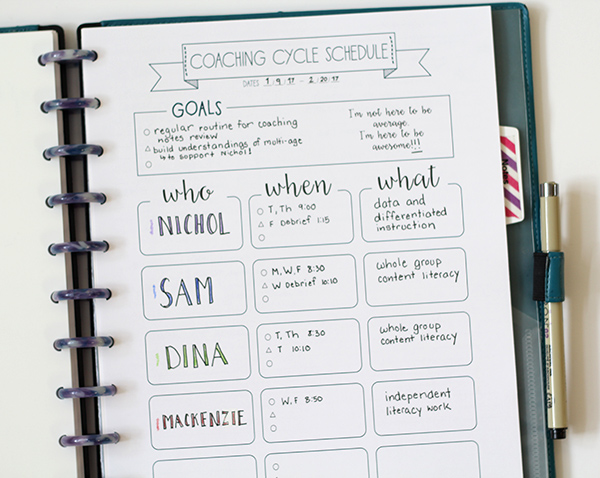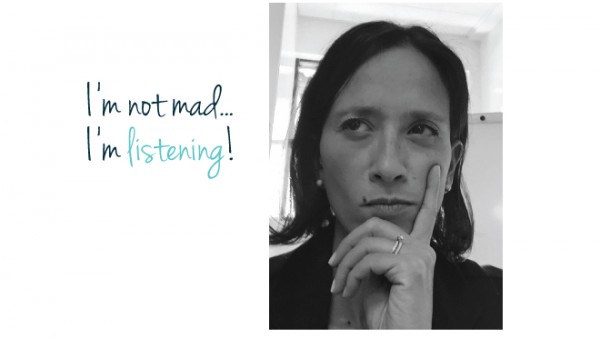4 Steps for Creating a Coaching Cycle Schedule
Goals and Motivation, Instructional Coaching, OrganizationEarlier this week, I broke out the cool new pens I got for Christmas and got to work on putting together my coaching cycle schedule for this next quarter.
Creating new schedules throughout the year is a cool opportunity for us coaches. It’s kind of like having a mini beginning-of-school-year kick off more than just once :)
You get to reset and regroup for a new journey ahead with new “students” to motivate and move forward.
I know that sometimes creating a coaching cycle schedule can feel overwhelming, so I wanted to share the steps I use to simplify the process a bit and make it fun.

OK, now that we’ve got those steps and tips down, grab yourself a nice bright sheet of white paper and head over to the printer. I just designed a new Scheduling Tool I want to share with you.

It’s simple, fun, and includes space at the top to jot down a few goals for your upcoming coaching cycles. And because I think quotes are cool and inspiring, I included one of those too :)

Once you have it printed out, you can pop it in your Coaching Kit. I like to put mine front and center, along with a color coded index of the teachers I’ll be working with. You know me and color coding :) The colors help me quickly find the different “sections” for teachers. So when I head into a classroom, I can just whip my Kit right open to that color.

Want to learn more about how I work through coaching cycles? Check out the Walk Through a Coaching Cycle Workshop, where we walk through a full coaching cycle together.
I’ll also help answer some of those logistic questions that come up:
- How many teachers do you work with during your coaching cycles?
- How many observations and feedback meetings do you schedule x week?
- Do you always set-up face-face feedback meetings, or do you use email at all?
Here’s what Nancy C. had to say about her Coaching Workshop experience:
“First of all, I want to tell you that I absolutely LOVE your documentation and your videos! What a fantastic package you’ve put together. This is only my second year as a Literacy Coach so I’m really just learning as I go along and your clear and concise way of explaining the coaching cycle is EXACTLY what I needed. I cannot thank you enough.
Here we go Coaching Cycles, here we go!! Whoop whoop.
Alright friend, I’m feeling really good about this second half of the school year. If there are any other topics or resources you’d like me to share heading into this year, be sure to let me know!
![]()














